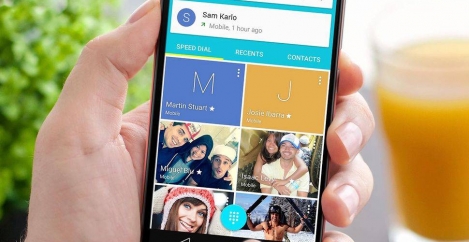February 14, 2017
More people will have smartphones than running water or bank accounts by 2021, claims report 0
 By 2021, more members of the global population will be using mobile phones (5.5 billion) than bank accounts (5.4 billion), running water (5.3 billion), or landlines (2.9 billion), according to the 11th annual Cisco Visual Networking Index (VNI) Global Mobile Data Traffic Forecast for 2016 to 2021. Strong growth in mobile users, smartphones and Internet of Things connections as well as network speed improvements and mobile video consumption are projected to increase mobile data traffic seven-fold over the next five years.
By 2021, more members of the global population will be using mobile phones (5.5 billion) than bank accounts (5.4 billion), running water (5.3 billion), or landlines (2.9 billion), according to the 11th annual Cisco Visual Networking Index (VNI) Global Mobile Data Traffic Forecast for 2016 to 2021. Strong growth in mobile users, smartphones and Internet of Things connections as well as network speed improvements and mobile video consumption are projected to increase mobile data traffic seven-fold over the next five years.
By 2021, Cisco projects mobile data traffic to reach the following milestones:
- Mobile data traffic to represent 20 percent of total IP traffic—up from just 8 percent of total IP traffic in 2016.
1.5 mobile devices per capita. Nearly 12 billion mobile-connected devices (up from 8 billion and 1.1 per capita in 2016), including M2M modules. - Mobile network connection speeds will increase threefold from 6.8 Mbps in 2016 to 20.4 Mbps by 2021.
- Machine-to-machine (M2M) connections will represent 29 percent (3.3 billion) of total mobile connections—up from 5 percent (780 million) in 2016. M2M will be the fastest growing mobile connection type as global
- Internet of Things (IoT) applications continue to gain traction in consumer and business environments.
- 4G will support 58 percent of total mobile connections by 2021—up from 26 percent in 2016 and will account for 79 percent of total mobile data traffic.
- The total number of smartphones (including phablets) will be over 50 percent of global devices and connections (6.2 billion)—up from 3.6 billion in 2016.
The explosion of mobile applications and adoption of mobile connectivity by end users is fueling the growth of 4G, soon to be followed by 5G growth. Cisco and other industry experts anticipate large-scale deployments of 5G infrastructures to begin by 2020. Mobile carriers will need the innovative speed, low latency, and dynamic provisioning capabilities that 5G networks are expected to deliver to address not just increasing subscriber demands but also new services trends across mobile, residential, and business markets. Cisco forecasts that 5G will account for 1.5 percent of total mobile data traffic by 2021, and will generate 4.7 times more traffic than the average 4G connection and 10.7 times more traffic than the average 3G connection.
“With the proliferation of IoT, live mobile video, augmented and virtual reality applications, and more innovative experiences for consumer and business users alike, 5G technology will have significant relevance not just for mobility but rather for networking as a whole,” said Doug Webster, vice president of service provider marketing. “As a result, broader and more extensive architectural transformations involving programmability and automation will also be needed to support the capabilities 5G enables, and to address not just today’s demands but also the extensive possibilities on the horizon.”














